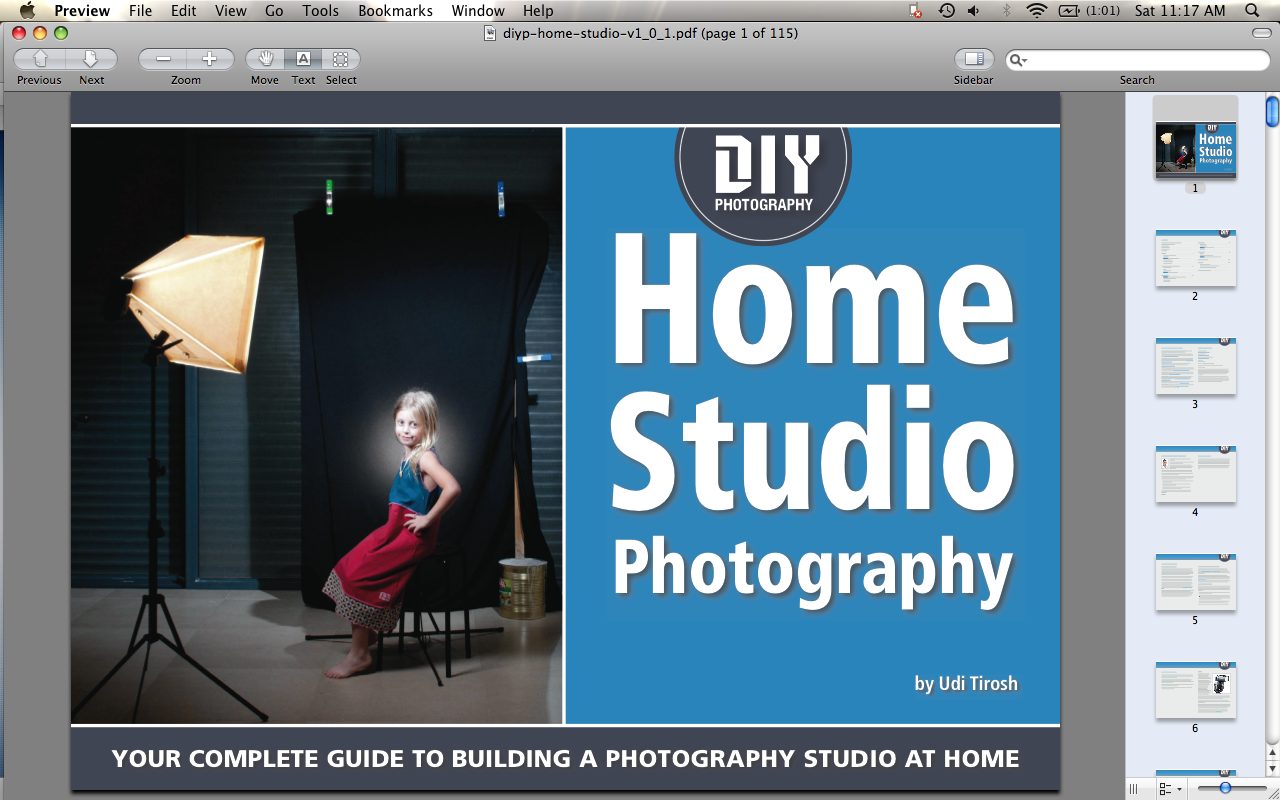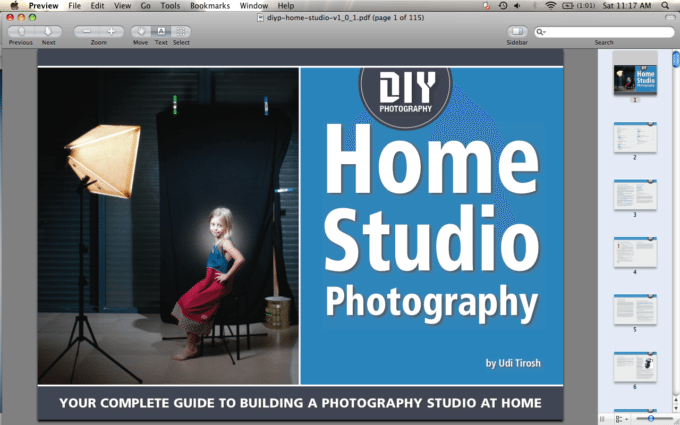Do it yourself projects are usually very fun. I used to work on things like this back in college when I was more into cinematography. DIYPhotography’s Udi Tirosh, the creator of the well reviewed Bokeh Master’s Kit, has written a very informative and carefully explained book: Home Studio Photography. The eBook is a complete listing of a bunch of fun projects to work on at home when you’re bored. Beyond boredom, many of the creations have practical applications in the photo world as well.
Before actually starting any of the projects, Udi gives full warning and disclosures about putting your safety first. This is only reasonable as some of these projects do require use of some dangerous tools. Granted, you’re not going to be using the same Plasma Cutters in Dead Space 2, but knives, saws and drills should be used with caution.
Before beginning the projects, Udi explains a bit about the use of strobes vs continuous light. He continues the discussion briefly with giving a brief description on light modifiers. These are preferred weapon of choice when on many gigs: in fact I loved the Gary Fong Collapsible, Orbis, and Ray Flash. Like many of the projects listed here, I am also a huge advocate of wireless flash control.
After this, we finally get to the good stuff: the projects! The projects range in vary difficulty levels, so readers can really choose for themselves. Additionally, Udi shows the results of the different projects when used in the studio.

Certain things, like the easiest softbox in the world, are put together very quickly and can be used with varying results. The trick is to use something like this with a theory I talk about often: lighting the scene one light at a time. For those of you that don’t know, this is when you shut off all the lights and add one light at a time to your scene. The light may have a light modifier attached, but by adding one light at a time and observing the effects you can often figure out exactly how much light you need and not waste any of it.
If you’re frustrated with your Nikon SB-900 (though we thought very highly of it) you can use it for many of the projects in this book. In fact, many projects in this book seem to use that flash.
The projects are not only fun and will get the creative juices going in your head, but many of them are also very cost-effective. Because of this: studio assistants and interns may want to take a look at this book to get some extra insights into how to save their studio money. Additionally, you’ll be able to learn about the different effects that various lighting kits will create.
Many of these items that you construct yourself are also seemingly built to be long-lasting: such as the foamboard reflector. Though it won’t collapse down into an easy to carry case, it will work wonders when trying to provide very true to life lighting.
For the strobists out there, there is an entire section of the book dedicated to creating your own flash modifiers. This section I actually feel could have used more items as studio strobes have grown in popularity over the years.

The whitebox in my studio test with the Olympus E-5 was inspired by one of the Light Tent project in Udi’s book. Judging from the results below, I think it did fairly well.

Your photos can take quite a step up in quality after using some of these creations. They will provide you with good light, which is something we emphasize on often here.
The end of the book has a whole portrait lighting cheat sheet for you. We’ll let you take a look at that yourself.
You can purchase the book for yourself here. It is highly recommended, and The Phoblographer makes no profit off of your purchase. If you’re a budding photographer, one looking for fun projects, or a professional on a tight budget, you may want to give this one a looksee.



